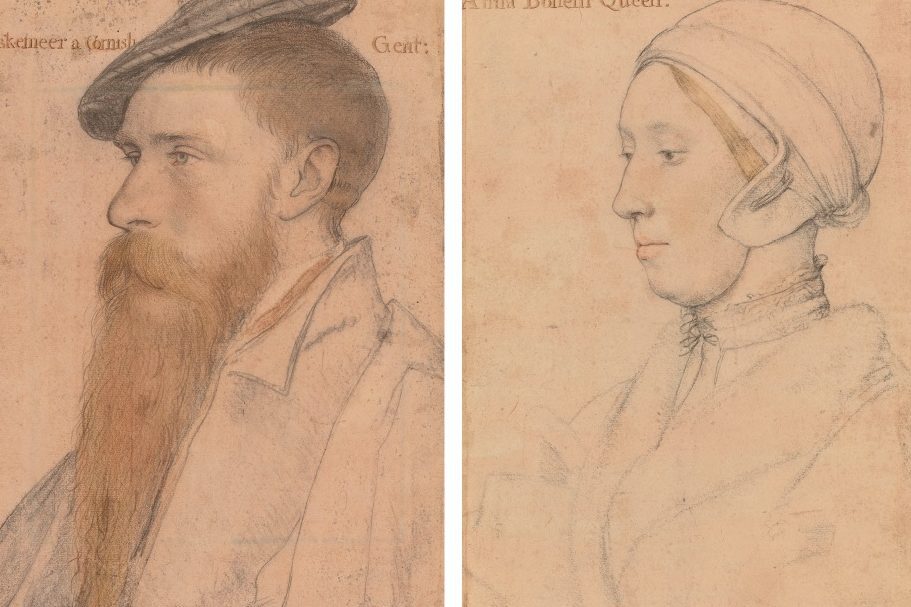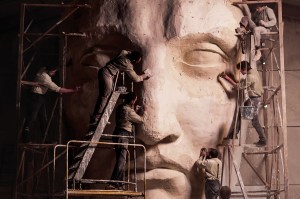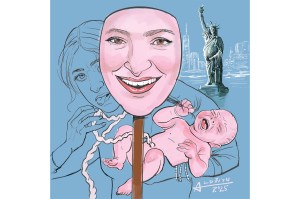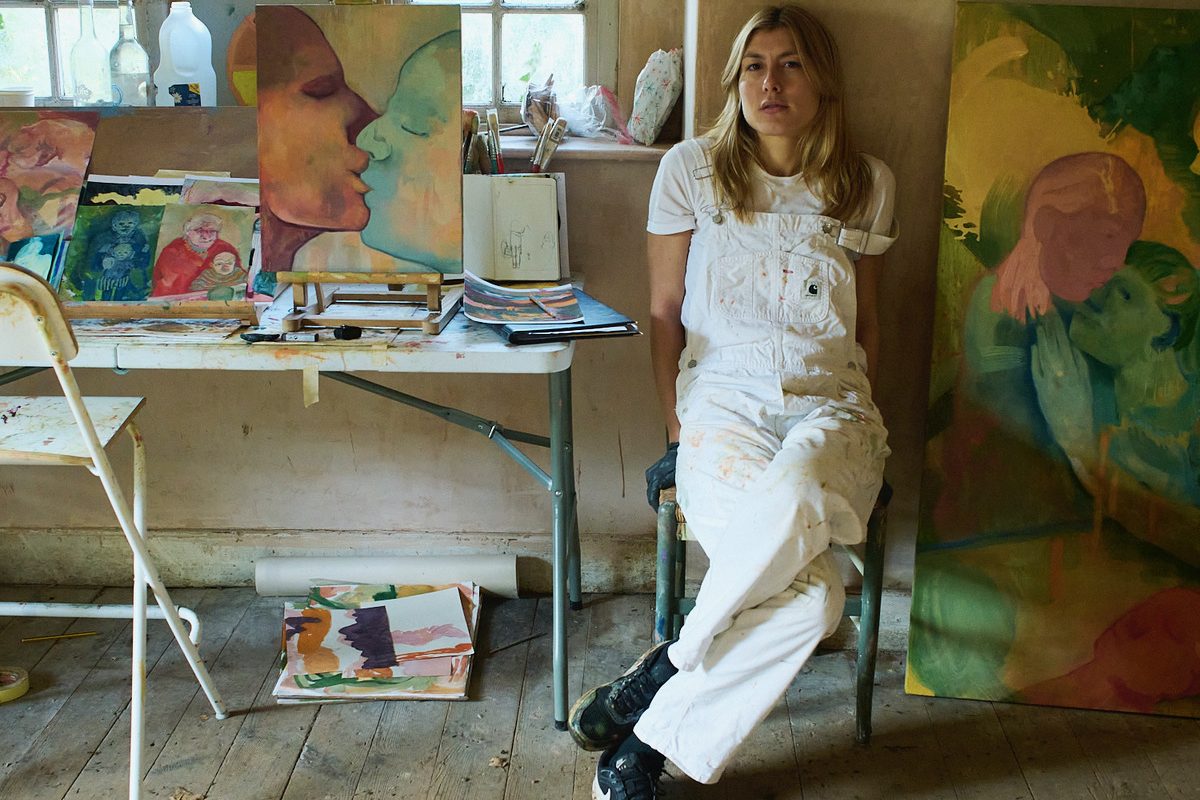On November 12, 1549, the twelve-year-old Edward VI, newly liberated from the tutelage of his overweening uncle, Lord Protector Somerset, was at last able to enter his father Henry VIII’s private apartments in the Palace of Whitehall. From the extraordinary mixture of treasures and bric-à-brac he found there, he chose one thing: “a book of patterns of physiognomies” by his father’s court painter, Hans Holbein, who had died in 1543.
Edward was already familiar with his fellow European rulers from their portraits in the long gallery at St. James’s, which seem to have been labeled and arranged as a teaching tool for the boy. Now, on the threshold of power, he wanted to familiarize himself with the establishment of Tudor England.
The word ‘portrait’ was unknown in the early sixteenth century. It entered the language thanks to Holbein
But there was a problem. It’s familiar to anyone who has opened a box of family photos and looked in bewilderment at the jumble of unknown faces: the drawings were unnamed. In similar circumstances, and at the same age as Edward, I turned to my mother; her identifications are still scribbled on the back of all too few of the photos in my childish hand. The orphaned Edward turned instead, as he so often did, to his favorite tutor, John Cheke.
By a series of extraordinary flukes, Holbein’s drawings with Cheke’s identifications are still in the Royal Collection and a selection of about half of them is on display in the Queen’s Gallery, together with a contextualizing handful of Holbein’s finished portraits and a plethora of other gorgeously colored and extravagantly formed Tudor artifacts from Hampton Court and Windsor.
The result is that the visitor can experience the same delight as Edward did on that November day almost 500 years ago: of drawings taken from life, which still seem to live and make their sitters live as well.
Kate Heard, the senior curator of prints and drawings at the Royal Collection Trust, who has organized the exhibition, is a subtly effective guide, nudging you to look closely at how Holbein achieves so much with so little: a licked finger wiped through black chalk to make a highlight in the glossy fabric of a ruffled sleeve; a dash of white on a cheek or a forehead to indicate the sheen of a beautiful woman’s skin; a dab or two of black ink to catch the thickening hair in the nape of a man’s neck; persistent jabs of the pen to get the cast of an eye or the profile of a nose exactly right. Thanks to Heard’s gentle prodding, I have never looked at the drawings more closely — not even when I handled them loose in their mounts back in the 1970s in the Royal Library at Windsor.
Heard is also an effective supplement to Cheke as a guide to the identity of the sitters. She summarizes carefully an accurately the accumulated scholarship of generations, and pays generous tribute to her predecessor, Jane Roberts, whose near forty-year stewardship of the Print Room at Windsor did so much to facilitate access — including my own — to the drawings.
Which makes it even nicer that two of my re-identifications of the sitters from that period — Anne Boleyn and James Butler, Earl of Ormond — are accepted here. There’s also an interesting discussion of why Anne as Queen of England should have been portrayed in the process of dressing. I had suggested the reason was that Holbein had to catch some of his sitters first thing in the morning in their busy and important lives; Heard has the altogether more intriguing idea that the drawing was intended to serve as the basis for an intimate and come-hither miniature of Anne for the still-lascivious Henry.
Thus far, well and good. Even very good. But it doesn’t go half far enough — because the minute focus on the drawings effectively turns Holbein into a miniaturist. Now, he was a literal miniaturist; and of the highest quality, since his miniatures can be blown up big and still survive. But he could also, as only the greatest artists can, operate on a monumental scale — and on everything in-between.
You would scarcely know this from the exhibition. You would never grasp his astonishing originality either. Because even the title of the rather bland introductory essay to the catalogue diminishes him. It’s called “Portrait Artist at the Tudor Court.” But the word “portrait” was unknown in the early 16th century (hence Edward’s “book of physiognomies”). It entered the language only under the Stuarts. And it did so largely thanks to Holbein: in other words, Holbein wasn’t any old portrait painter; he was (in England at any rate) the inventor of the portrait.
His coadjutor was the man who introduced Holbein to England: the great Dutch scholar Erasmus. This is because a principal inspiration for the new interest in the individual face came from Roman funerary sculpture. Which meant that the words usually inscribed in some form or another in the finished picture were almost as important as the image. As was the idea of memorialization.
There was an opportunity to deal with all this though van Leemput’s copy of Holbein’s vast mural of the Tudor dynasty, that was destroyed in the Whitehall fire of 1698. But it is badly fluffed. Not even the magic of Holbein’s full-length Henry VIII is explained. “The only king whose shape you remember,” as my mentor, Geoffrey Elton, memorably declared in his Cambridge lectures long ago.
Finally, the claim that Holbein cannot be pinned down religiously is perverse: he began in the household of Thomas More during his first visit to England, but flourished in the circle of Thomas Cromwell during his second. Because, like Henry himself, he had converted. Only the genius of his art remained the same and shaped the contrasting images of those two great opponents, More and Cromwell, for ever.
This article was originally published in The Spectator’s UK magazine. Subscribe to the World edition here.


























Leave a Reply